The historical significance of textured hair traditions is a profound exploration into human identity, resilience, and artistic expression. It extends beyond mere aesthetics, reaching into the deep ancestral roots of Black and mixed-race communities across continents and centuries. This journey through the meaning of hair, from ancient practices to contemporary affirmations, unveils a living archive of human spirit and heritage.

Roots
Consider, if you will, the delicate yet powerful helix of a single textured strand. It holds within its very structure not merely biology, but echoes of civilizations, whispers of resistance, and the enduring spirit of countless generations. For those with textured hair, this isn’t just about what grows from the scalp; it is a direct, undeniable link to a rich heritage —a lineage of practices, meanings, and declarations spanning millennia. Our exploration begins here, at the source, where the elemental biology of hair intertwines with ancient cultural understandings.
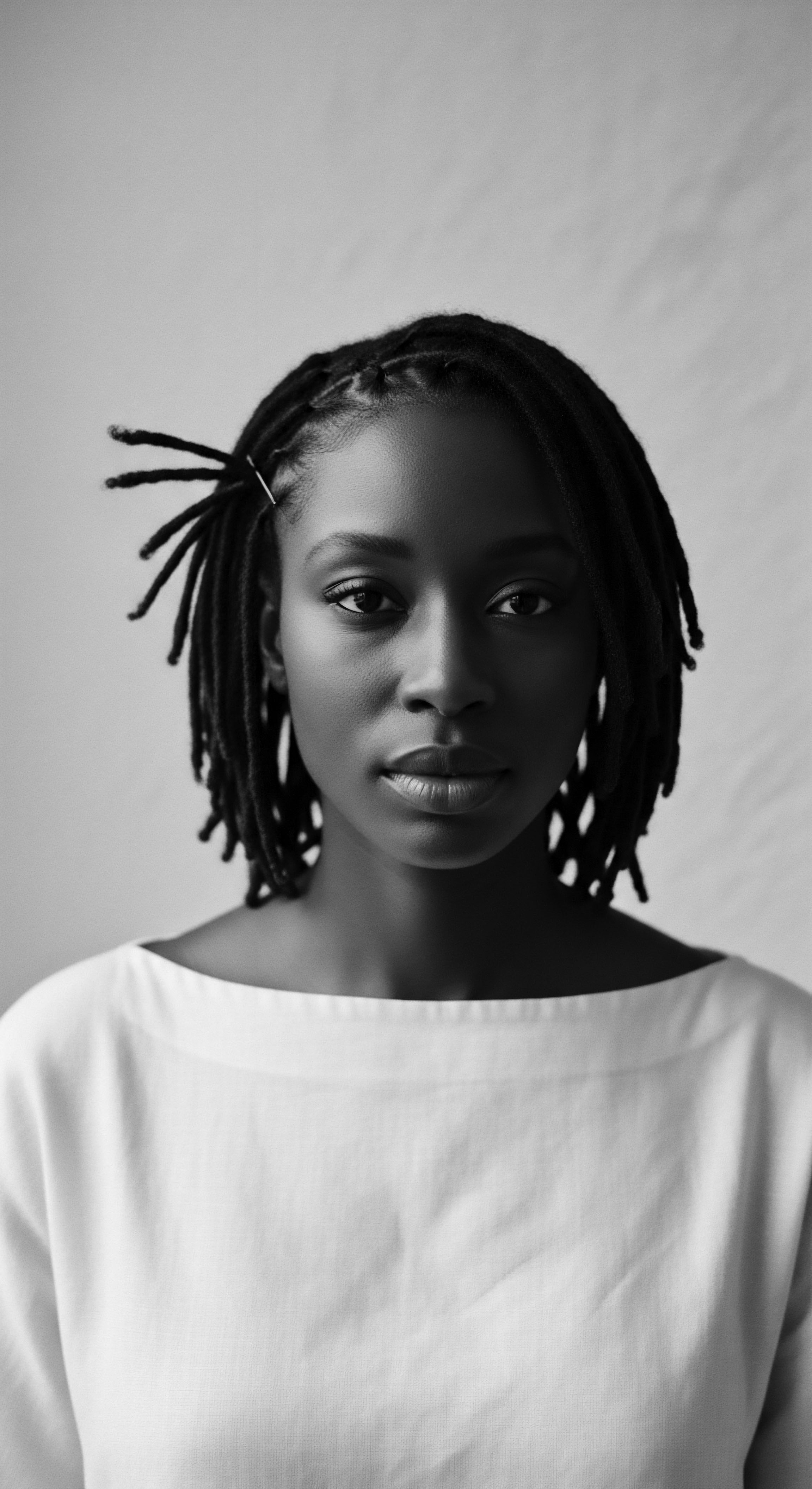
The Sacred Anatomy of Hair
The unique architecture of textured hair, with its elliptical cross-section and curled follicle, is a testament to natural adaptability. This distinct morphology, quite varied even within what Western science often broadly categorizes as “African hair,” allowed for a canopy of protection against intense solar radiation, a natural ventilation system for the head. (Lasisi et al. 2021).
From an ancestral viewpoint, this physical marvel was often seen as a conduit for spiritual energy, connecting individuals to the divine and to their forebears. In many pre-colonial African societies, the head itself was considered the most elevated part of the human body, a sacred portal. Therefore, the hair adorning it was treated with utmost reverence.
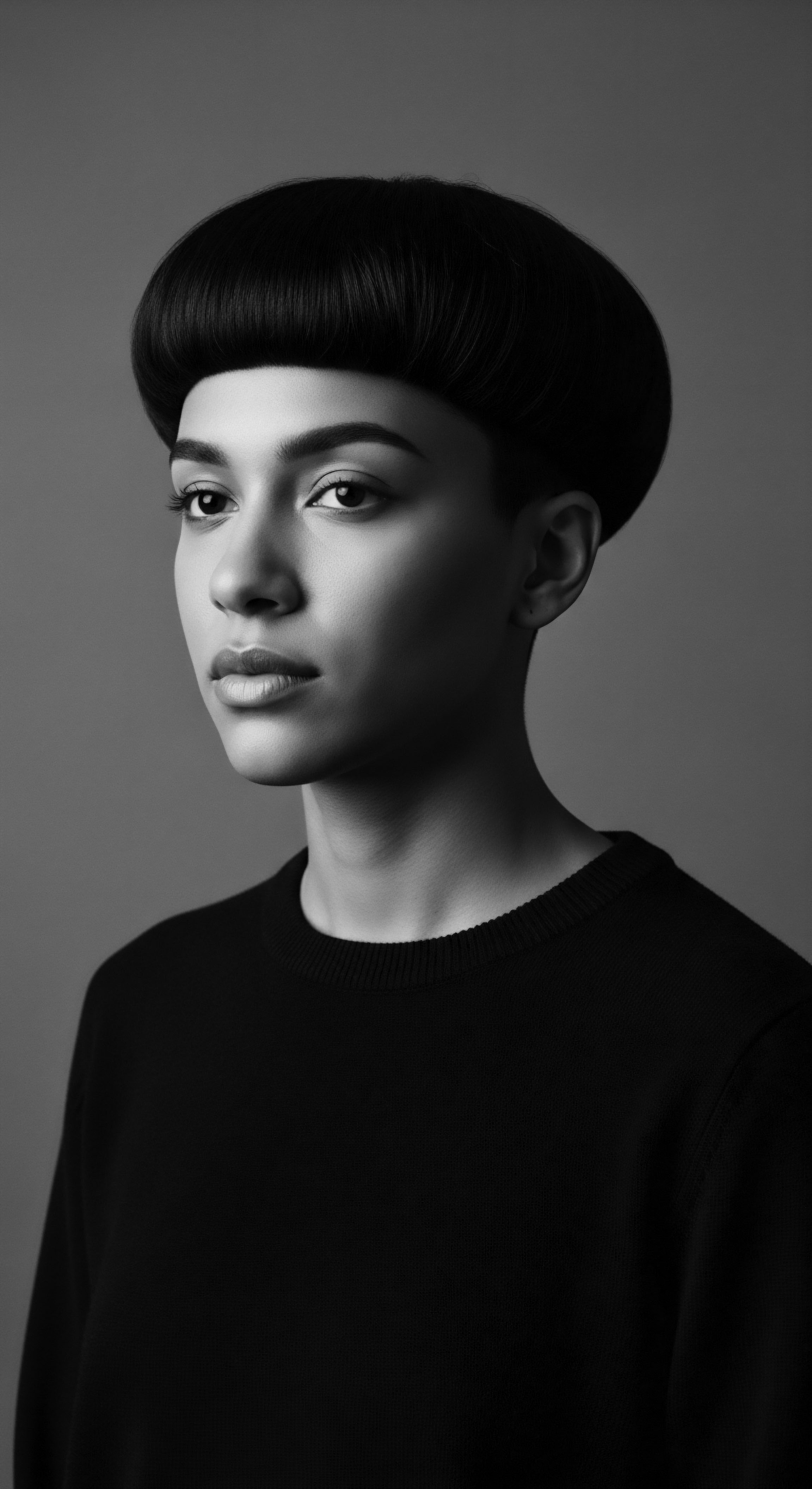
Cultural Topographies of the Scalp
Long before modern classification systems sought to categorize textured hair into types, African communities possessed their own sophisticated lexicon and understanding of hair. Hairstyles served as intricate maps of identity, communicating a person’s heritage , social standing, marital status, age, wealth, and even their religious or tribal affiliation. The Yoruba people, for instance, crafted elaborate styles that spoke volumes about community roles, with Irun Kiko, a thread-wrapping technique, carrying meanings tied to femininity and rites of passage.
Textured hair traditions are a living chronicle, a biological and cultural testament to the enduring spirit of ancestral wisdom.
This historical use of hair as a visual language contrasts sharply with later imposed systems, which often stemmed from Eurocentric beauty ideals and carried inherent biases. These colonial perceptions often deemed textured hair “unruly” or “kinky,” reflecting a dehumanizing gaze that sought to erase indigenous forms of beauty.
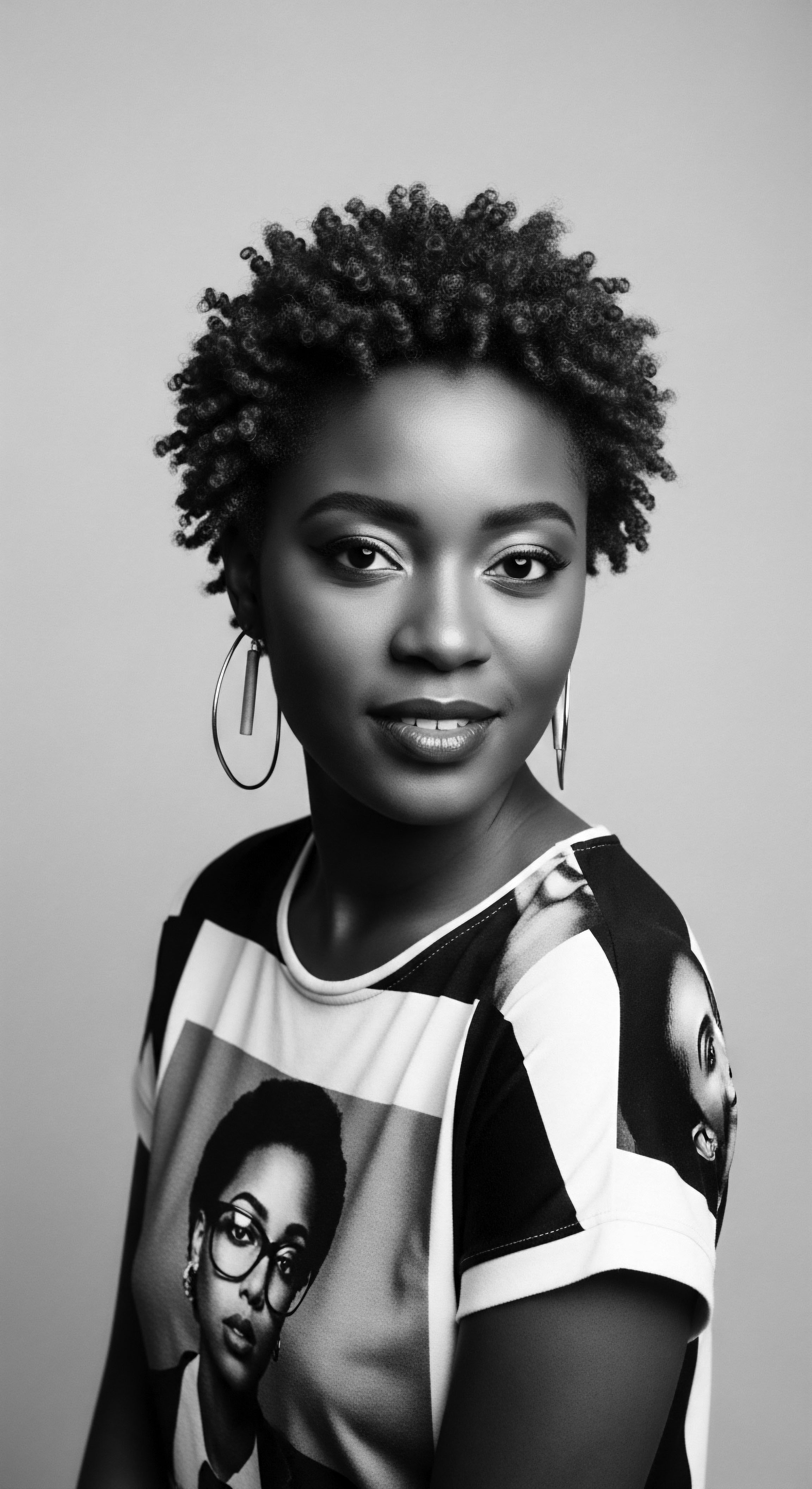
Hair as a Genealogical Record
Specific styles held deep significance, acting as a historical record. A particular number of braids, their direction, or the addition of certain adornments could convey messages about personal experiences, life stages, or family lineage. This was not merely stylistic choice; it was a societal script written upon the scalp, comprehensible to those within the community.
- Yoruba hairstyles ❉ Often conveyed social status, community roles, and spiritual connections.
- Himba traditions ❉ Employed red ochre paste on dreadlocked styles, symbolizing an intimate connection to the earth and ancestors.
- Fulani braids ❉ Recognized for intricate patterns and often adorned with beads or cowrie shells, representing heritage and marital status in West African cultures.
The tools and practices themselves, often passed through generations, also represent a heritage of ingenuity. Early combs, for instance, have ancient origins, predating slavery by thousands of years, with the Afrocomb in the late 1960s marking a powerful reconnection for the diaspora. This understanding of the hair’s own biological marvel, paired with the sophisticated cultural languages woven into its care, provides a compelling foundation for appreciating the full significance of textured hair traditions.
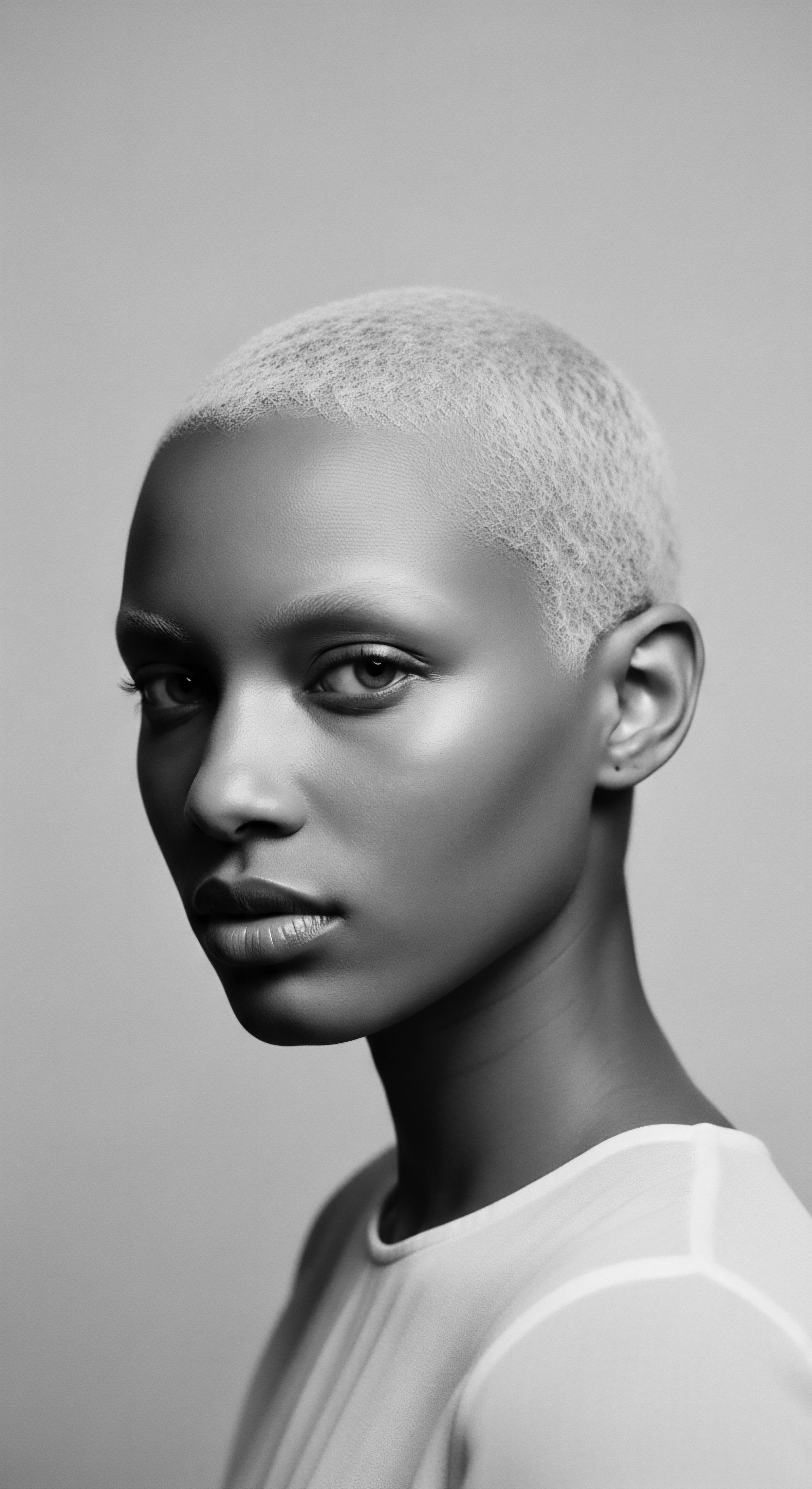
Ritual
The historical significance of textured hair traditions extends into the realm of ritual, where care and community become intertwined, forging practices that are as much about connection as they are about appearance. These rituals, whether daily acts of tending or ceremonial preparations, have long served as conduits for shared wisdom, collective memory, and the powerful assertion of self against forces of erasure. The tender thread of care, passed down through generations, transforms into a living legacy.

The Communal Spirit of Adornment
In many African societies, the act of hair styling was, and remains, a profoundly communal experience. It was common for mothers, sisters, aunts, or close friends to gather, their hands working rhythmically through hair, sharing stories, gossip, and counsel. This intimate exchange strengthened familial bonds and fostered a deep sense of belonging.
The creation of a hairstyle could signify a coming-of-age, a marriage, or a moment of mourning, marking life’s significant passages with purposeful design. Young girls, in particular, would undergo elaborate braiding ceremonies, symbolizing their transition into womanhood, with intricate patterns and adornments reflecting their new social status.
Traditional hair styling sessions were intimate spaces where ancestral wisdom flowed, building bonds and cementing identity.
The tools and techniques employed speak volumes about the innovation inherent in these practices. While modern technology offers various options, the historical reliance on natural materials and skilled handwork reveals a deep respect for the hair’s integrity. These methods, designed for the unique needs of textured hair, ensured health and vitality while creating styles of remarkable complexity and beauty. The artistry was not simply for show; it held profound social, spiritual, and protective purposes.
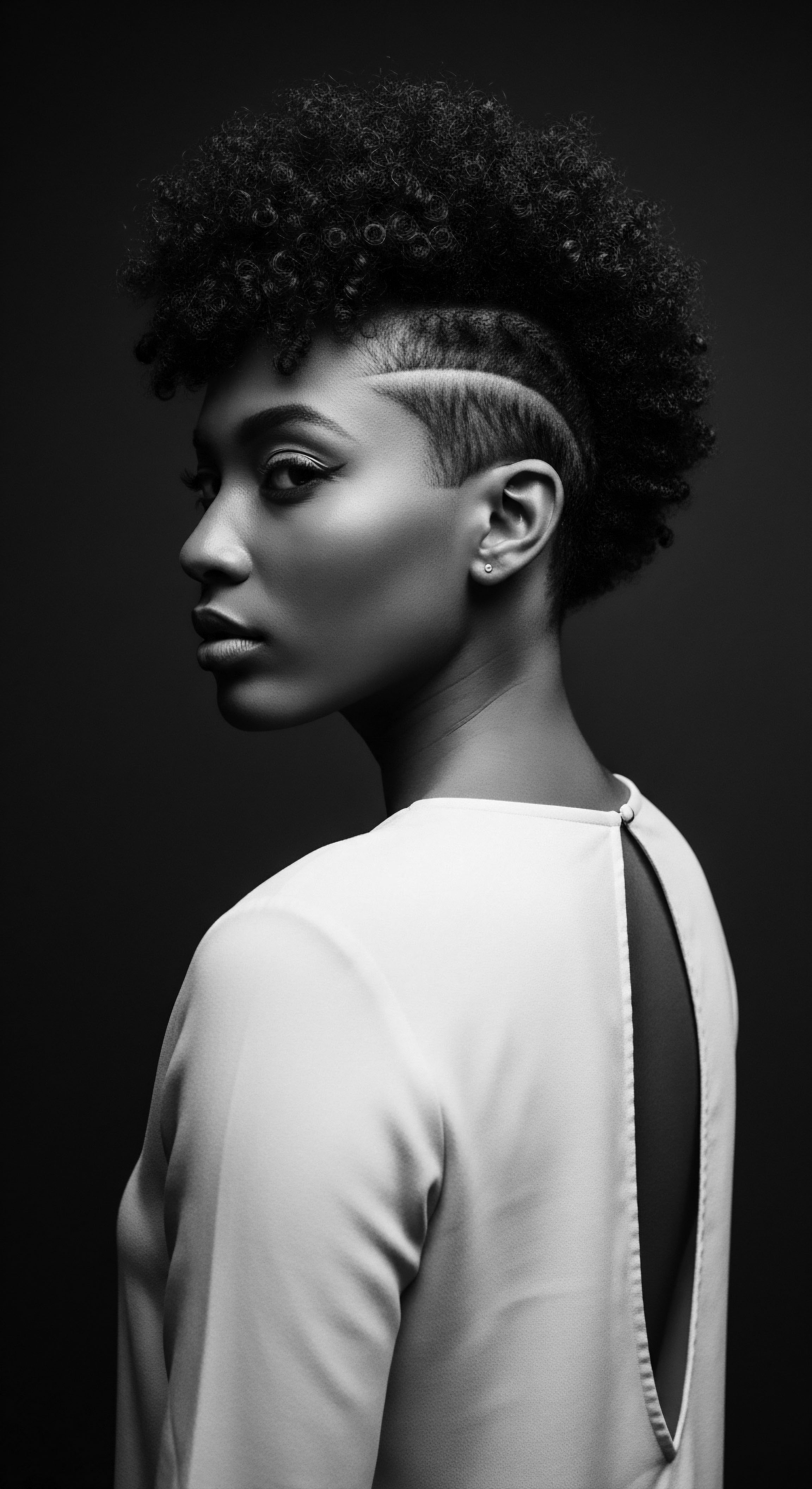
Styling as Survival
During the transatlantic human trade, the significance of textured hair traditions shifted dramatically yet powerfully. Stripped of their cultural markers, enslaved Africans often had their heads shaved, a brutal act of dehumanization aimed at severing ties to their heritage . Yet, even in this brutal context, hair became a site of resistance. Cornrows, in particular, transformed into covert communication systems.
Enslaved individuals would style patterns that encoded escape routes or concealed seeds for survival in a new, unfamiliar land. This remarkable instance of using hair as a tool for survival is documented in places like Colombia, where King Benkos Biohó and his community in San Basilio de Palenque utilized cornrow patterns as maps for freedom. This act of rebellion, woven into the very strands of their being, demonstrates the incredible resilience of their cultural practices.
The Tignon Laws of 1786 in Spanish Louisiana serve as another stark historical example. These laws compelled free women of color to cover their hair with a tignon or headscarf, an attempt to visually distinguish them from white women and to tie them to the enslaved class. Yet, these women, with breathtaking defiance and creativity, transformed the tignon into a statement of elegance and distinction, using luxurious fabrics, ornate knots, feathers, and jewels. This act, a beautiful reclamation of autonomy, stands as a testament to the enduring spirit of self-expression within the context of enforced oppression.
| Historical Era Pre-Colonial Africa |
| Hair Practice Braids, Locs, Adornments |
| Purpose and Heritage Connection Signified age, marital status, social rank, tribal affiliation, spiritual beliefs. |
| Historical Era Transatlantic Slave Trade |
| Hair Practice Cornrows |
| Purpose and Heritage Connection Covert communication, maps for escape, concealment of seeds, preservation of cultural identity. |
| Historical Era Colonial Louisiana (1786) |
| Hair Practice Tignon (Headscarf) |
| Purpose and Heritage Connection Initially enforced subjugation, transformed into a mark of distinction and rebellion by women of color. |
| Historical Era Civil Rights Movement (1960s-1970s) |
| Hair Practice Afro Hairstyle |
| Purpose and Heritage Connection Powerful symbol of Black pride, unity, and resistance against Eurocentric beauty norms. |
| Historical Era Hair traditions have consistently served as a canvas for identity and resistance across diverse historical landscapes. |
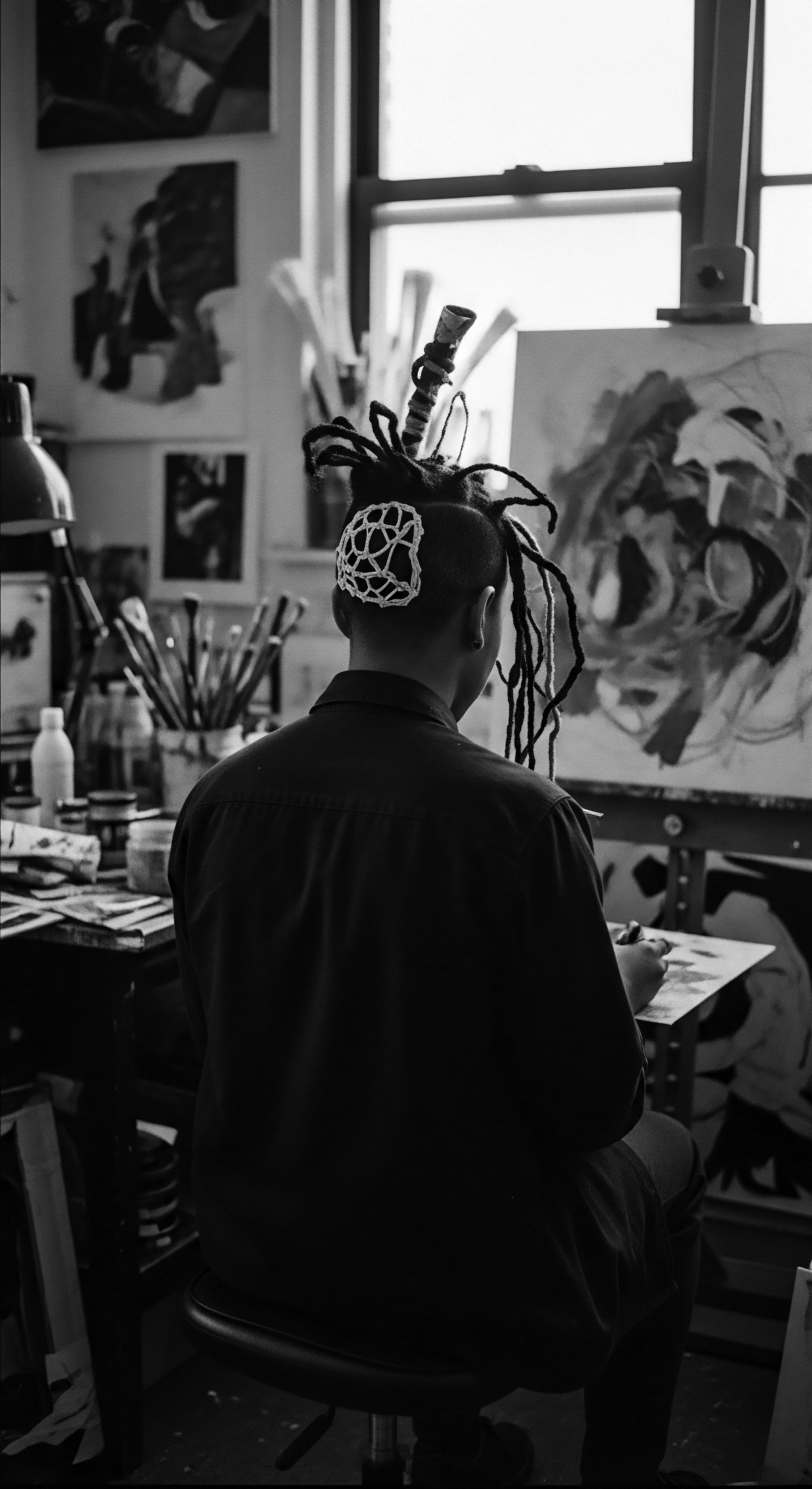
Relay
The continuing significance of textured hair traditions is found in their unbroken relay across generations, connecting ancient practices to contemporary understandings, and validating ancestral wisdom through scientific lens. This ongoing dialogue between past and present not only celebrates the resilience of textured hair heritage but also empowers individuals to nurture their hair with a holistic understanding that transcends superficial trends.
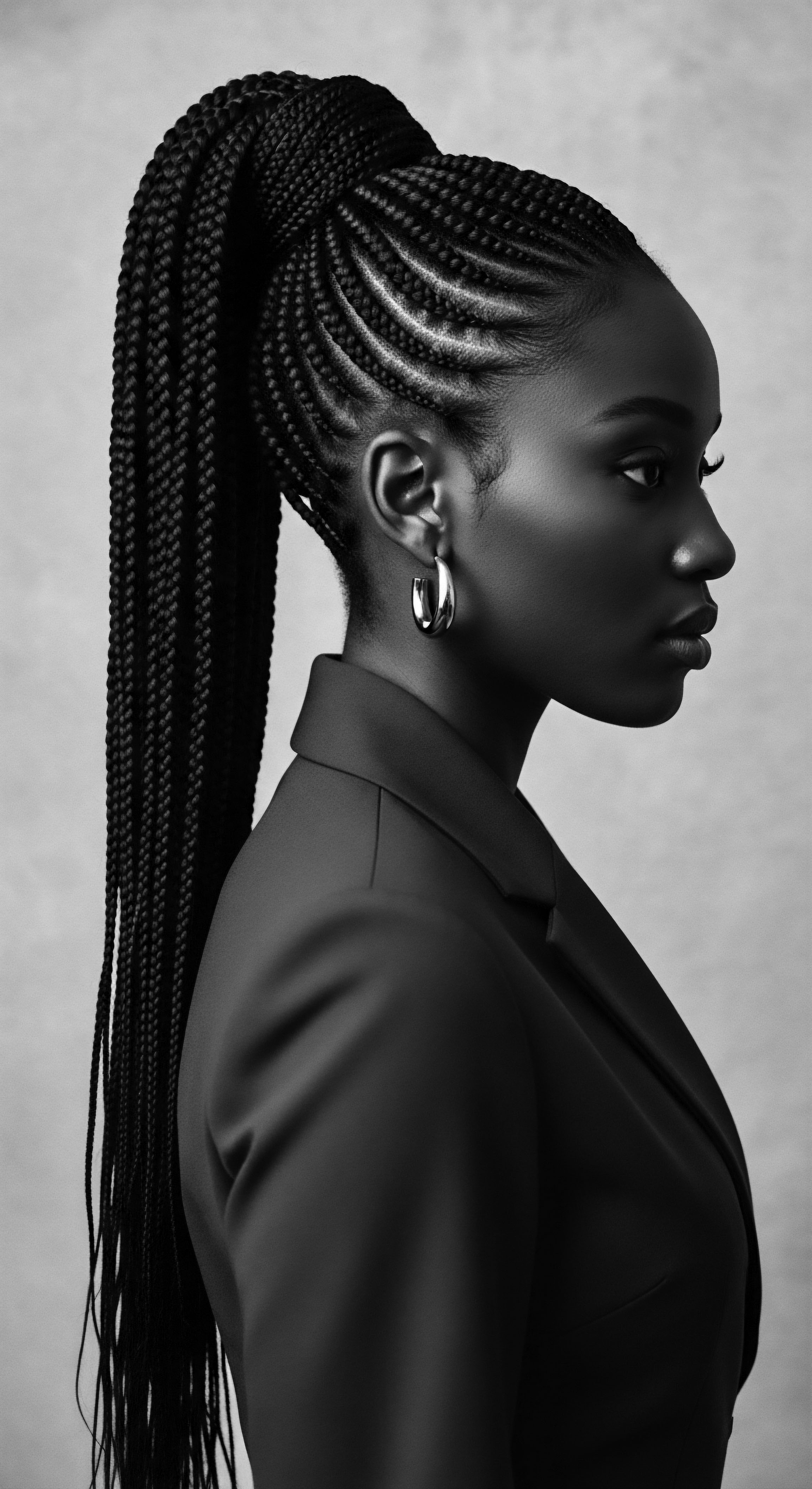
Unpacking the Science of Ancestral Care
Modern science often provides a deeper understanding of why traditional hair care practices, passed down through oral heritage , were remarkably effective. The intrinsic nature of textured hair, with its unique structure and curl pattern, necessitates specific attention to moisture retention and structural integrity. Research indicates that afro-textured hair, due to its high curvature, can be more susceptible to dryness and breakage if not properly cared for. Ancestral practices, employing natural oils, plant extracts, and intricate styling techniques, intuitively addressed these concerns.
Consider the ancient Egyptians, who, regardless of hair type, were trailblazers in hair care. They utilized natural oils like castor oil, almond oil, and pomegranate oil for nourishment and protection against the arid desert climate. These practices were not simply about outward appearance; they were deeply rooted in a holistic view of well-being, where beauty and health were inseparable. The use of specific herbs and oils, such as hibiscus and amla in Indian Ayurveda, or ginseng in traditional Chinese medicine, demonstrates a global heritage of natural hair care wisdom that prioritized scalp health and hair vitality.
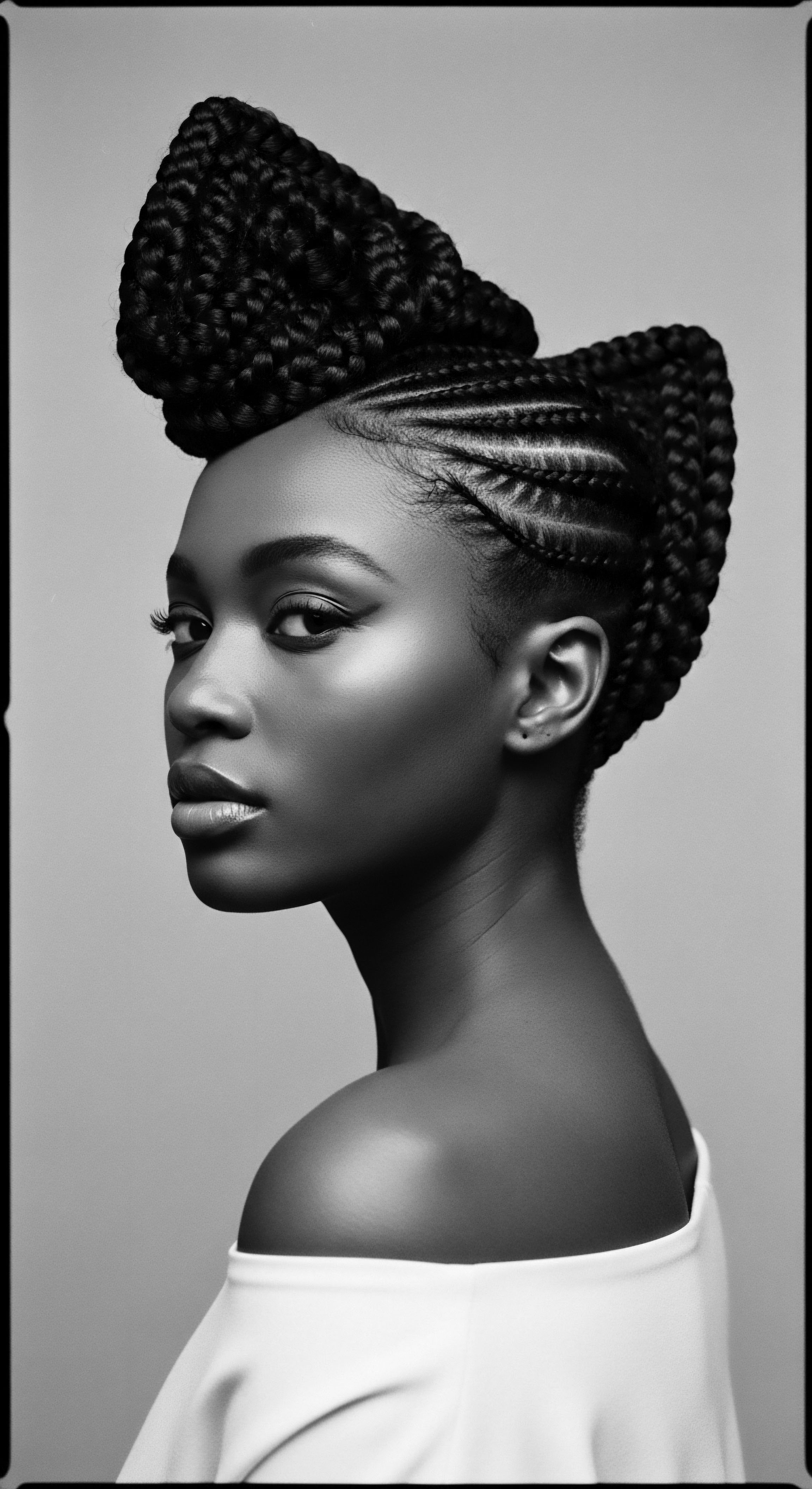
How do Ancestral Wisdom and Modern Scientific Understanding Intersect in Daily Hair Care?
The intersection of ancestral wisdom and modern scientific understanding lies in recognizing the efficacy of time-honored remedies and techniques. For instance, the communal braiding practices of African cultures, often involving the application of natural butters and oils, created protective styles that minimized manipulation and locked in moisture. This aligns with contemporary trichological understanding of low-tension styling and the importance of emollients for hair strength. When women gathered to braid hair, they were not only strengthening social bonds but also collectively applying centuries of accumulated heritage knowledge regarding scalp health and hair growth.
The evolution of understanding textured hair has also seen a re-evaluation of classification systems. While traditional systems based on macroscopic characteristics categorize hair into broad groups like Asian, European, and African hair, contemporary perspectives acknowledge the vast diversity within each, especially within African hair. This recognizes that focusing solely on curl pattern overlooks crucial aspects of porosity, density, and elasticity, all of which inform effective care.
The reclamation of natural hair in the modern era, particularly within Black and mixed-race communities, represents a powerful reassertion of heritage and identity. The Afro hairstyle, for example, became a potent symbol during the Civil Rights Movement, standing as a clear rejection of Eurocentric beauty norms and a declaration of Black pride. This movement, rooted in a collective desire for self-acceptance, echoes the ancestral use of hair as a political statement and cultural marker.
- Shea Butter ❉ A traditional West African staple, revered for its moisturizing properties and now scientifically recognized for its rich fatty acids and vitamins that seal moisture into hair.
- Coconut Oil ❉ Widely used across African and Asian cultures for centuries, valued for its ability to penetrate the hair shaft, reducing protein loss and adding luster.
- Baobab Oil ❉ Extracted from the “tree of life,” this African oil is prized for its nourishing qualities, supporting hair elasticity and strength, reflecting ancient wisdom.
The continuous re-discovery and honoring of these traditions, supported by scientific validation, provides a blueprint for contemporary holistic textured hair care. It is a powerful affirmation that the wisdom of our ancestors holds tangible benefits for present-day wellness, offering solutions that are not only effective but also deeply connected to a rich cultural lineage.

Reflection
As we conclude this exploration, the vibrant narrative of textured hair traditions unfurls itself as far more than a historical curiosity; it stands as a living, breathing testament to enduring human spirit. From the intricate artistry of ancient styles that spoke of status and lineage, to the quiet acts of resistance woven into braids during profound oppression, hair has consistently mirrored the triumphs and trials of communities. The deep reverence for hair, seen across countless ancestral practices, resonates still today within Roothea’s own ‘Soul of a Strand’ ethos.
It is a call to recognize the inherent dignity within each coil and kink, to understand that the care of textured hair extends beyond physical nourishment to embrace the spiritual, cultural, and historical threads that bind us. The past informs the present, shaping a future where textured hair is celebrated not as a trend, but as an undeniable, luminous part of collective heritage , a continuous unfolding story of beauty, strength, and unwavering identity.

References
- Byrd, Ayana D. and Lori L. Tharps. Hair Story ❉ Untangling the Roots of Black Hair in America. St. Martin’s Press, 2001.
- Chimbiri, K. N. The Story of Afro Hair ❉ 5000 Years of History, Fashion and Styles. Scholastic Children’s Books, 2022.
- Dabiri, Emma. Twisted ❉ The Tangled History of Black Hair Culture. Harper Perennial, 2019.
- Donahoo, S. Afro-textured Hair and Black Women’s Identities. Dissertation, Texas A&M University, 2019.
- Ellington, Marlese, and Jessica L. Underwood. Textures ❉ The History and Art of Black Hair. Hirmer Publishers, 2020.
- Gould, Virginia Meacham. Chains of Command ❉ Slave Soldiers and Their Families in the French Atlantic. LSU Press, 2012.
- Jacobs-Huey, Lanita. From the Kitchen to the Parlor ❉ Language and Becoming in African American Women’s Hair Care. Oxford University Press, 2006.
- Lasisi, Tina, et al. “High-throughput phenotyping methods for quantifying hair fiber morphology.” Scientific Reports, vol. 11, no. 1, 2021, p. 11535.
- Lashley, Myrna L. “The importance of hair in the identity of Black people.” Nouvelles pratiques sociales, vol. 31, no. 2, 2019, pp. 207-220.
- Sherrow, Victoria. Encyclopedia of Hair ❉ A Cultural History. Greenwood Press, 2006.
- Thompson, Cheryl. “Black Women, Beauty, and Hair as a Matter of Being.” Feminist Media Studies, vol. 19, no. 5, 2019, pp. 671-689.
